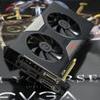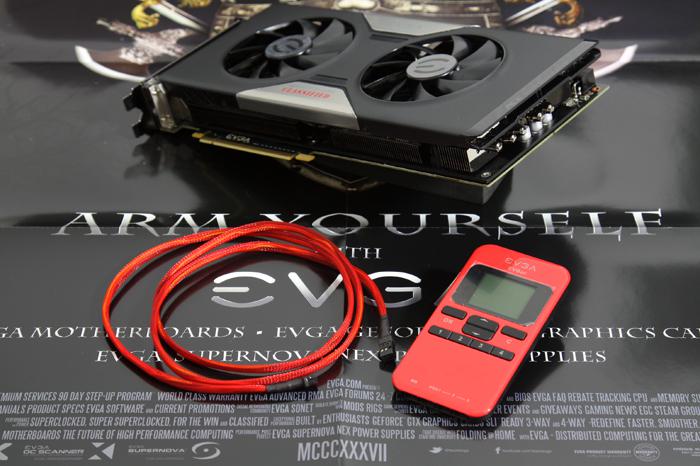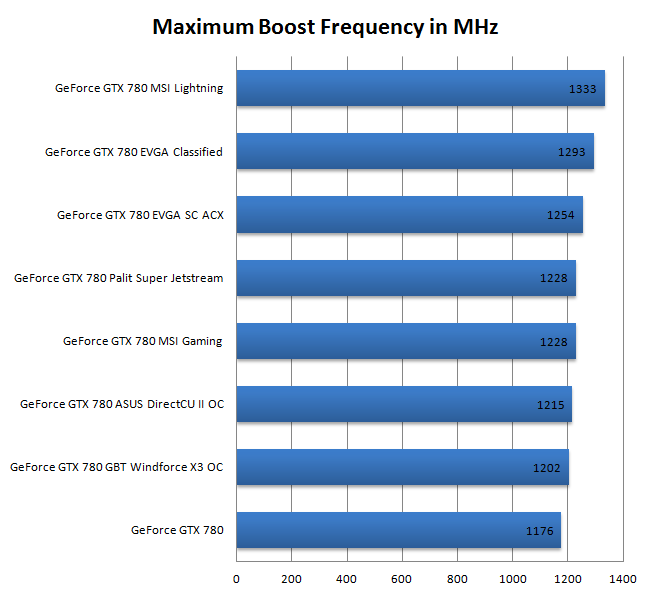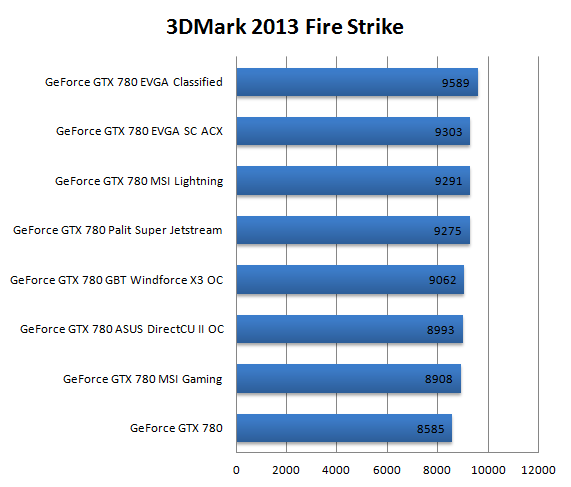Conclusion
Conclusion
Let me first state for the record that the Classified is a terrific product, it is the fastest factory clocked GTX 780 SKU available on the market, perdiod.. Built from A to Z properly and it has the muscle power to perform. Unfortunately NVIDIA's limitations (power / voltage / usage) applied simply castrate this product to a product that is not worthy the name Classified. These cards have been built for tweaking and overclocking, and NVIDIA simply prohibits it. What I am trying to say is that cards like the Classified normally would be able to overclock much higher, but restrictions enforced by NVIDIA prohibits all the design excellence and top notch hardware to go beyond a certain threshold, the wall of limitations I like to call it. So what is happening ?
The NVIDIA Green Light Program
Basically NVIDIA assigned design specifications to its partners which they may not pass. The Green Light program requires vendors to send in their board designs to NVIDIA, then they wait for their approval from NVIDIA. NVIDIA on their end will check and make sure that the design complies with noise, power, voltage and heat numbers - and if it meets them, the card is approved. Lately all kind of limits have been set as well. NVIDIA dictates how high the power usage of your card may be, as well as GPU usage and a voltage limitation. If the card does not comply, it is declined and the board partner will have to resubmit it after making sure it complies with the regulations and specifications set by NVIDIA. If a board partner is pg-headed, they get blocked on GPU allocation, it is that simple. This way NVIDIA can make sure the products meet the voltage and power targets according to spec as well. From NVIDIA's side they are just making sure that their RMA rates are under control, we understand that, really we get it and also realise that 1200~1300 MHz on the GTX 780 cards really is already pretty nice. But the unfortunate side effect is that this pretty much equalizes all enthusiast SKUs at the same performance level. Within a certain margin, almost all and any card will over clock the same within a 100 MHz differential (roughly).
Any Solutions ?
Now sure, there are ways to get around some of the enforced limitations, but you have to perform Ninja cloak and dagger stuff in order to be able to pull that off, and with much risk as well. Yes there are BIOSes to be found that will help you out, yes there is hacked and illegal software to be found that can increase voltages. But even then you will be hitting a 1300~1350 MHz wall real fast and you will need to re-flash and tweak like a lunatic on steroids, not the stuff for the average graphics card buyer and only bringing more risk to this expensive product. Again, let me make it very clear, these are limitations enforced by NVIDIA, it's not the Classified.
Why is Guru3D making such a big deal about this topic ?
It bothers us, it seriously bothers us that manufacturers like EVGA, Gigabyte, MSI, Palit and ASUS are putting out intensely and crazy designed hardware, but then the end-user can't reap the benefits as they run into NVIDIA's stringent limitations. This is killing the enthusiast segment, and I'd hoped that NVIDIA should realize by now, it's the enthusiast segment that drives the mainstream sales. So by enforcing more and more limitations in the end NVIDIA will be hitting their own business hard. That's just my two cents on this though. See if you limit overclocking in such a manner that the result is that all products and brands perform roughly the same; then where is the fun left ? Why invest 699 USD in a Classified card that under similar circumstances can be clocked roughly the same as the cheapest model ?
My advice
NVIDIA should really think about allowing the top SKUs from all Tier 1 brands a hint more voltage and more extended power targets.
- Allow regular cards with a power limit at say 110%
- Allow Tier 1 design SKUs like WindForce 3X, Lightning, Classified and so on a higher voltage and power limiter.
See if the classified card would be able to run 1.25 ~ 1.30 Volts with a 130% Power limiter you probably be able to reach close to 1350~1400 MHz. We just know the GPU can handle it, and we are certain the board design is capable.
A Classified impression
Alright, back to the normal stuff. You know it is hard, really hard, to not like any of the Classified products released in the past year or two. And hey, the great thing is that EVGA was able to keep the card within a two slot design, meaning that you could even go for a SLI setup. And I know that sounds extreme, but everything about the GTX 780 Classified oozes and breathes extreme. The performance that you retrieve from the factory overclocked GeForce GTX 780 already is significant alright. The ACX cooler is reasonably silent and keeps this GPU chilled down at roughly 70 Degrees C. Coming from a GeForce GTX 680 you can expect a good 40% more performance and looking down from a GeForce GTX Titan, the performance difference is less then 2% and we have even seen a win or two over Titan with this card. This is due to the fact that this card can boost fairly high. So overall the performance remains close to or matches the reference clocked GeForce GTX Titan.
Aesthetics
Armed with the latest revision of the ACX cooler the card is cooling roughly 10 degrees Celsius lower opposed to the reference cooler whist remaining fairly silent. This revision is a dual-slot solution with two fans, I think it looks okay. The PCB obviously is 100% customized and armed with merely the best components available on the market ensuring a longer lifespan of this product. The looks, well the cooler in its all black design on a dark PCB. Great looking and very sturdy I must state as well. Missing however is a metal back plate at the backside of the card so the card can not bend when seated horizontally in the PC. Optionally you can purchase it. The same goes for the EVBOT, and optional purchase and with the NV restrictions in place, not worth the extra money.
Cooling & Noise Levels
The NVIDIA reference coolers are doing their job well, but they follow the temperature target of 80 degrees C. With the ACX cooling technology the GPU will get a good 400 to 450W of cooling power at its disposal. As a result the temperature target might remain 70 degrees C, but we have never seen the card pass 72 Degrees, and remember that it is factory overclocked. Now if the temperature is this low there is an extra benefit, the power and temperature limiters do not have to kick in, allowing the product to boost a little higher then usual or the factory overclock can be set higher, which is what EVGA did. This is one of many reasons as to why the card is so close towards the GeForce GTX Titan. Noise wise I am savvy as well. In its default configuration you can hardly hear airflow when the GPU is under stress installed in a PC.
Power Consumption
Again not bad, the card is rated at as having a 250 Watt TDP, we measure pretty much 233 Watts. From the top of my head that's roughly the number as GeForce GTX 580 had a two years ago. Compared to that product you have nearly double the performance at the same wattage. That 250 Watt TDP also will make running multi-GPU solutions a bit more easy. With two card we think an 800 Watt PSU would be sufficient. So while it's not great to have a GPU sucking up 250 Watt it could have been a lot worse. So, perspective is the word I like you to keep in mind.
Game Performance
The card in most scenarios will be performing at GeForce GTX Titan level, comparing towards GTX 680 it seems 30% maybe 35% faster. Drivers wise we can't complain at all, we did not stumble into any issues. And with a single GPU there's no micro-stuttering (if that ever bothered you) and no multi-GPU driver issues to fight off. Performance wise really there's not one game that won't run seriously good at the very best image quality settings. I mean, Metro Last Light at 2560x1440 at very high quality is doing ~50FPS on average, I rest my case.
Overclocking
With the release of GTX Titan, GTX 780, GTX 770 and GTX 760 a thing or two have changed, the new boost modes now also can be configured with temperature targets relative to maximum power draw and your GPU Core frequency offsets. Saying that I realize it's sounds complicated, but you'll have your things balanced out quite fast. This GPU with the cooler can take 1175~1200 MHz on the boost frequency fairly easily really, at that stage you added another 10% performance already. Our tweak made the GPU run at just under 1300 MHz depending on temperature, power draw and load.
So in the past weeks we tested eight GTX 780 cards. Alls cards depending will end up at roughly 1200 to 1333 MHz when overclocked on the boost frequency. Below the cards overclocked and showing the maximum stable Boost frequency.
So this is roughly the end-result tweaking wise. Remember, each batch, heck in fact even each card from the same manufacturer might behave differently overclocking wise as you have good silicon, and less good silicon. As for enthusiast overclocking, I think I already stated enough on the topic, NVIDIA hammered pretty much anything shut at roughly 1200~1300 MHz. As that is the range where all limiters kick in and complicate things.
The Card That Rules Them All
Now for the last part I wanted to show you the following 3DMark 2013 chart, this is a comparison of all eight GeForce GTX 780 cards tested thus far. Mind you that these cards run at the default clock frequencies and power targets as specified by the manufacturer.
With it's 993 MHz (Ref 863) with a Boost clock of 1046 MHz (Ref 900), the GeForce GTX 780 Classified is without doubt the fastest factory clocked SKU available. And that does show in the scores. Obviously there's a price premium tied to that. Choose carefully and do realize that the performance difference in-between the cheapest and the most expensive product is roughly 10% tops. That's 4 FPS extra on an average 40 FPS. And once overclocked, that difference nearly vanishes. I'm just sayin' man, perspective.
Concluding
The Classified is a top notch GTX 780, factory overclocked to run at GeForce GTX Titan performance levels. It really is a nice card with a leading class design. The Classified edition is perfectly capable of serving the guys and gals that want sheer performance and a cool looking card right out of the box, or it can serve the enthusiast end-user just as well as this product was made and designed to break barriers.
Though we had hoped the card would have gotten a backplate as standard overall we feel it is a sturdy build with great component quality and A rock-solid VRM design. As you have been able to notice, the Classified is very fast in performance as it comes close / or even passes a Titan. Butter smooth fluid framerates is what you'll play your games with thanks to the very serious amount of horsepower at hand with this GTX 780. It does so while hardly making any noise and very low stress temperatures. Now I really wanted to overclock faster, but NVIDIA's Voltage and Power limiters are fighting us. The hardware most certainly can go a notch higher. It is the same thing over and over again and is taking killing off the extreme and enthusiast market. But enough of that.
Great performance, sturdy design, quality components, great cooling and all that at silent noise levels. What more can you ask for. Next to that, there remains room left for tweaking. Overall the product is just very impressive and has nice looks. One problem now however is with all these limitations in place, why should you go for a classified and not pick up the default GTX 780 SKU. Well, that is something only you can answer yourself. Some will like to pay extra for the default overclock, others want a Classified for brevity's sake and some just want the best of the best. Hey I'm an Enthusiast PC user, I understand bro !
The MSRP pricing for the card we expect will hover at EUR 649 (incl. VAT) and roughly 699 USD, as always I have to admit the price remains the biggest obstacle for this product series, as with that budget it is out of reach for many. As you can tell, I have been really battling in this conclusion with my dillema's in regards to the NVIDIA restrictions. Feel free to share your opinion in our forums. Regardless of everything, the GeForce GTX 780 Classified is an excellent product.
We reward the EVGA GeForce GTX 780 Classified edition with our top pick award.
Recommended Downloads
- Sign up to receive a notice when we publish a new article
- Or go back to Guru3D's front page





